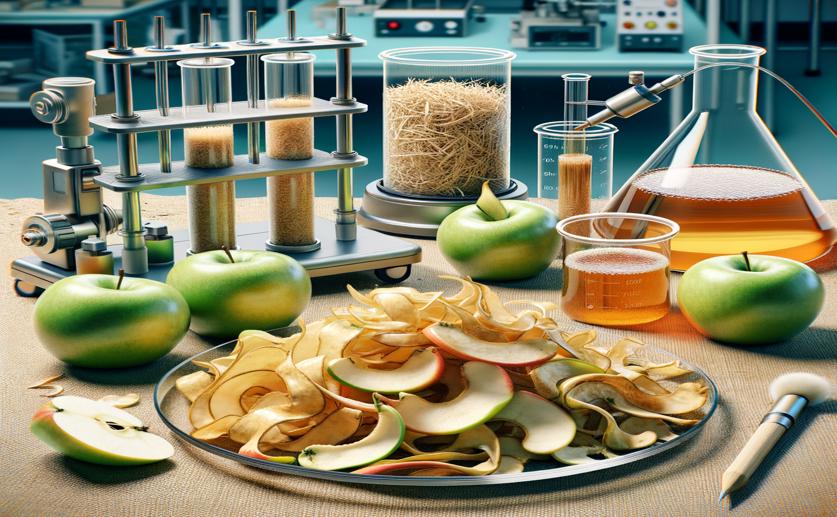
Creating Edible Coatings from Apple Waste Using Natural Plant Fibers
Jim Crocker
27th August, 2024

Image Source: Natural Science News, 2024
Key Findings
- Researchers at Shaanxi Normal University developed edible coatings from apple pomace to extend the shelf life of fresh-cut apple slices
- The coatings are made by breaking down apple pomace fibers into nanofibers, which are then formed into films with strong mechanical and oxygen barrier properties
- These coatings are non-toxic and effectively inhibit browning and reduce respiration rates, keeping apple slices fresh and firm for longer
SustainabilityBiotechPlant Science
References
Main Study
1) Fabraction of edible bio-nanocomposite coatings from pectin-containing lignocellulosic nanofibers isolated from apple pomace.
Published 24th August, 2024
https://doi.org/10.1016/j.ijbiomac.2024.135030
Related Studies
2) Improving the shelf-life and quality of fresh and minimally-processed fruits and vegetables for a modern food industry: A comprehensive critical review from the traditional technologies into the most promising advancements.
3) Probiotic-loaded edible films made from proteins, polysaccharides, and prebiotics as a quality factor for minimally processed fruits and vegetables: A review.
4) Apple peel-based edible film development using a high-pressure homogenization.



 5th April, 2024 | Jim Crocker
5th April, 2024 | Jim Crocker